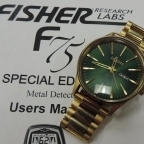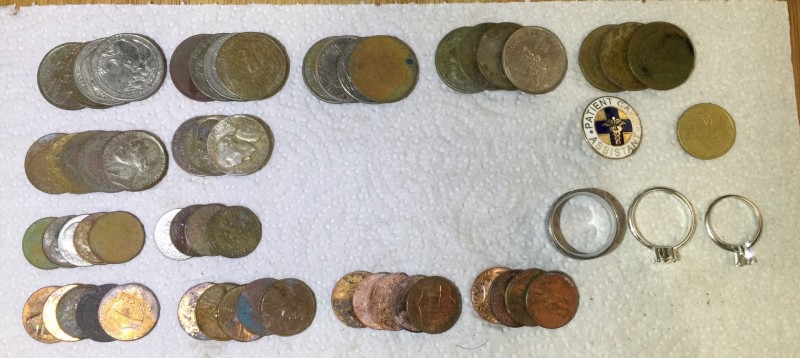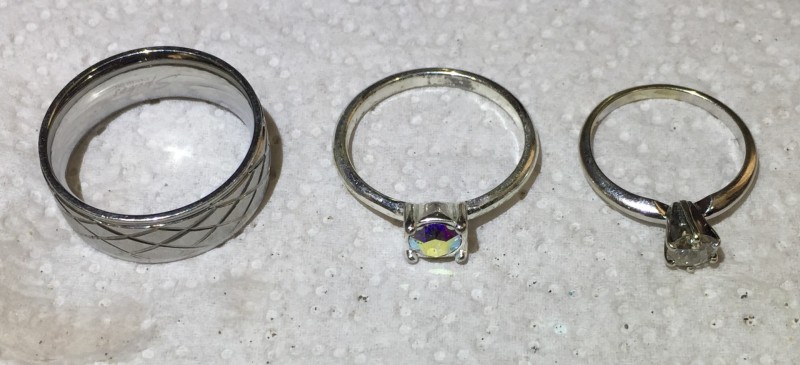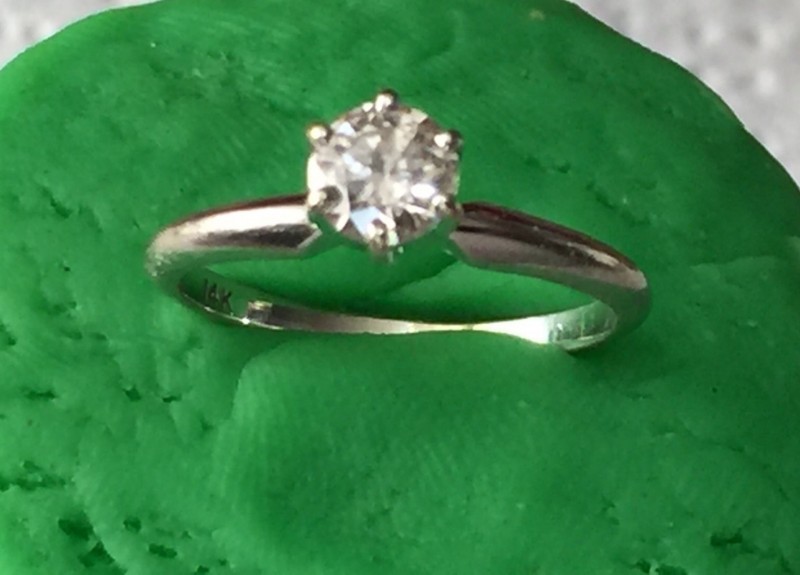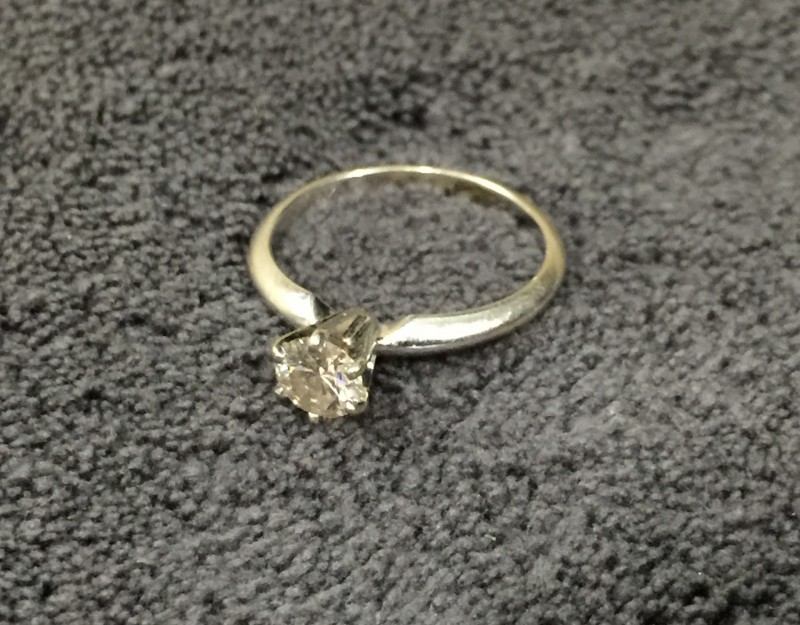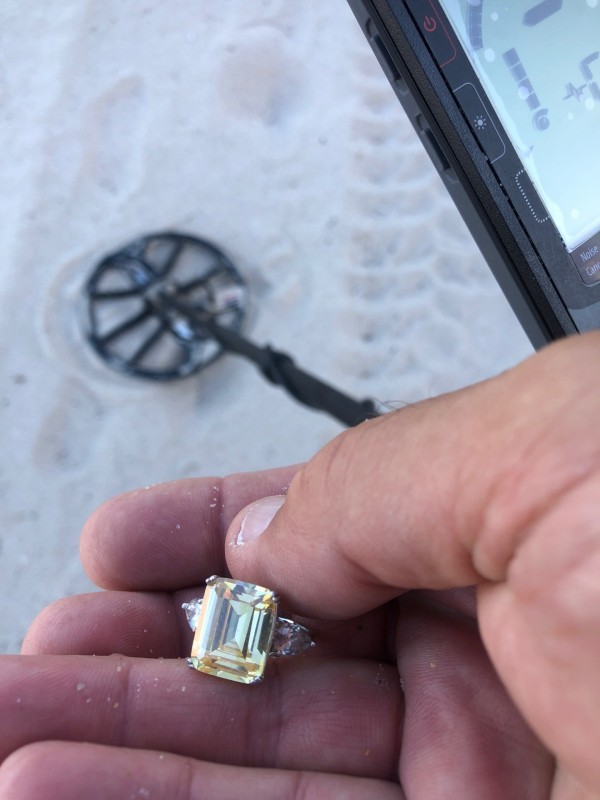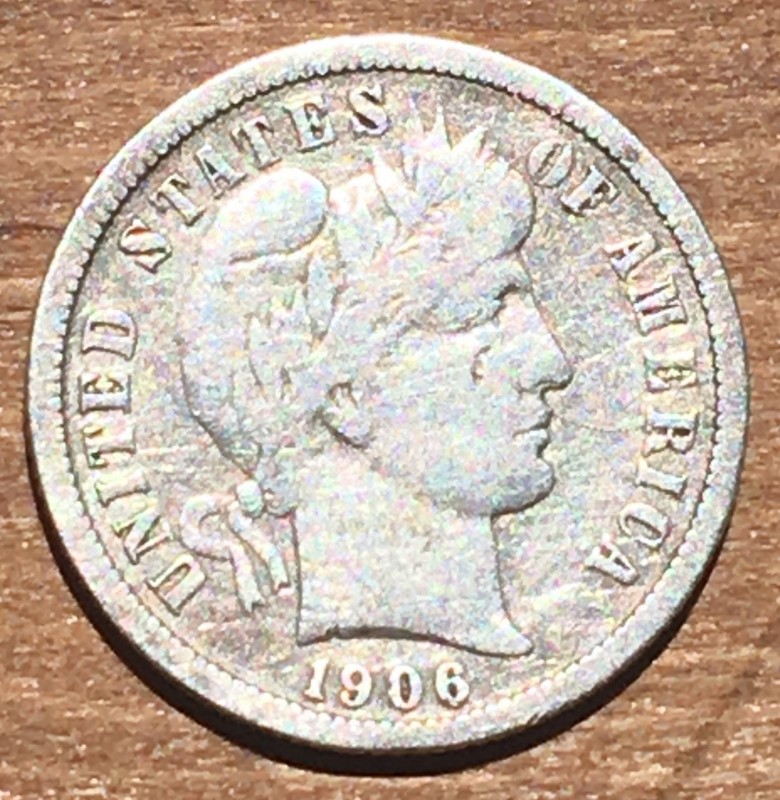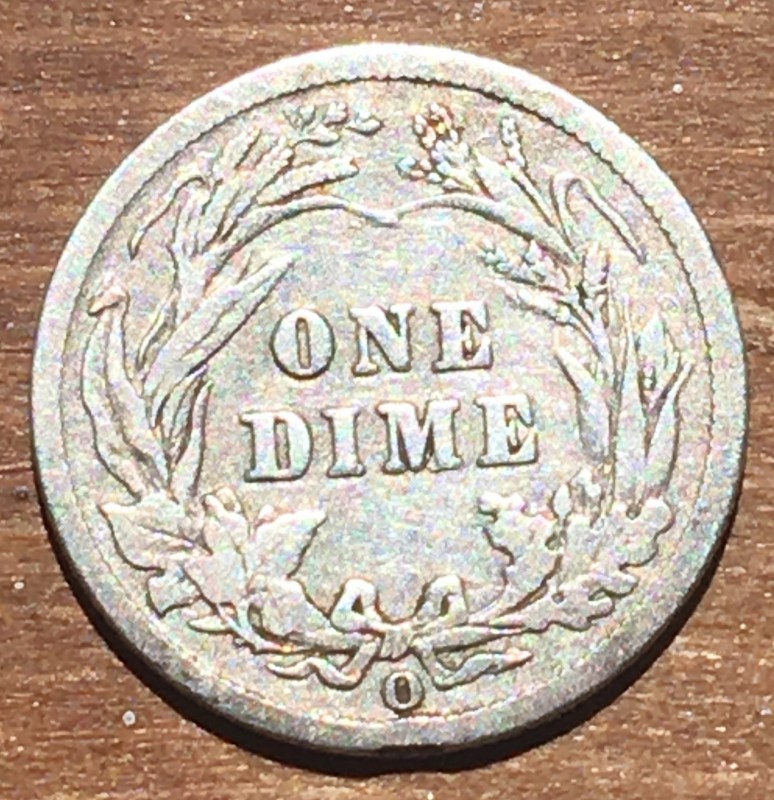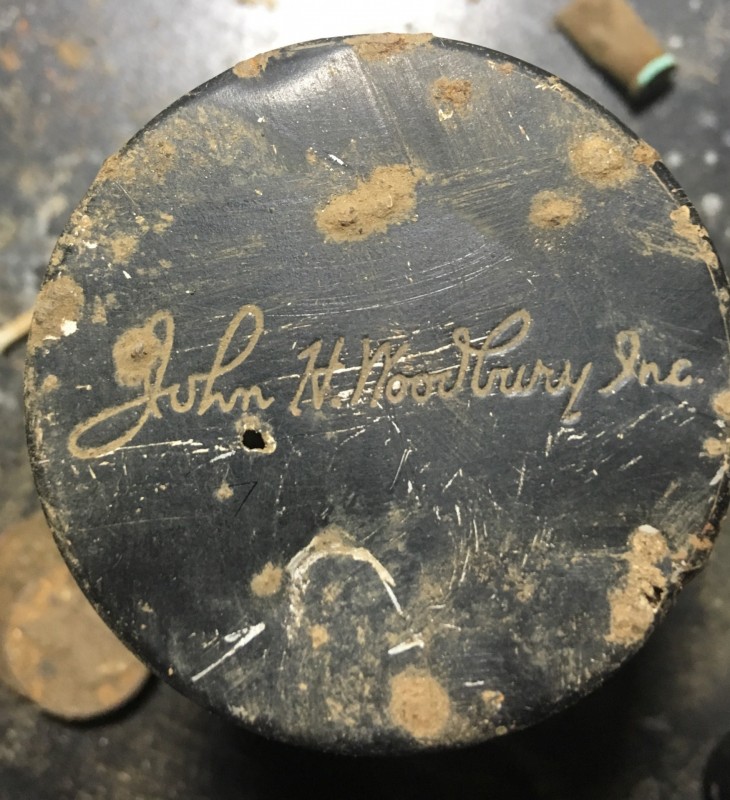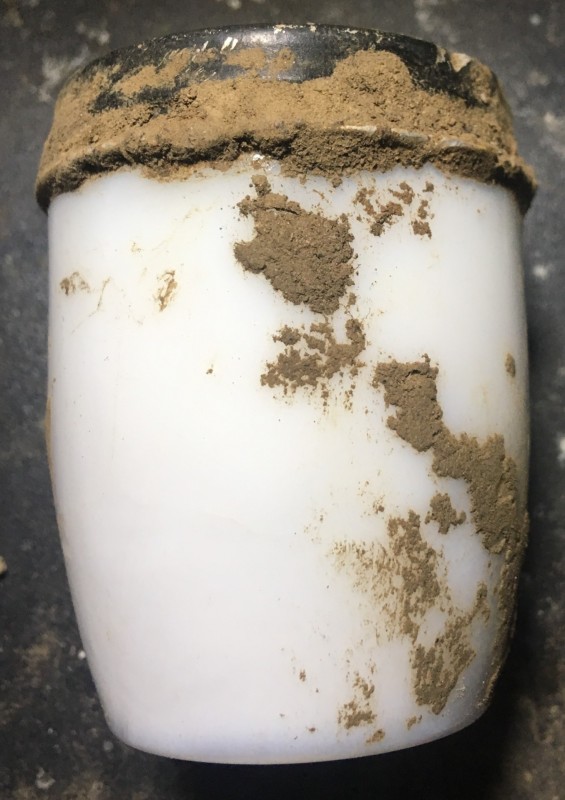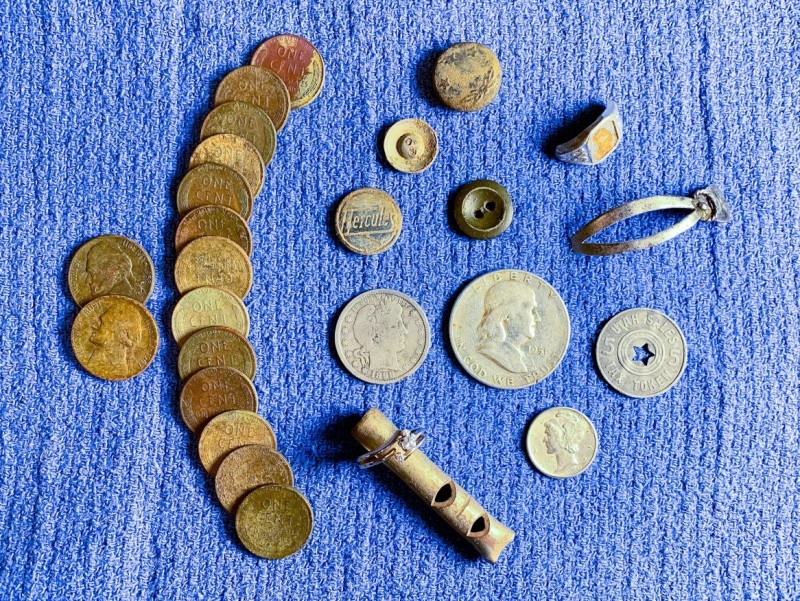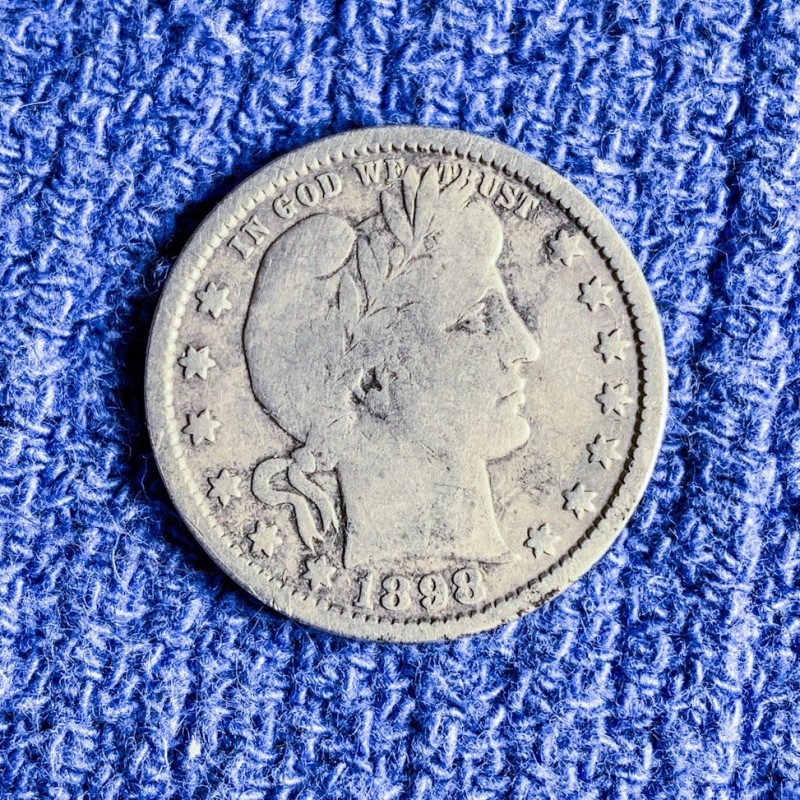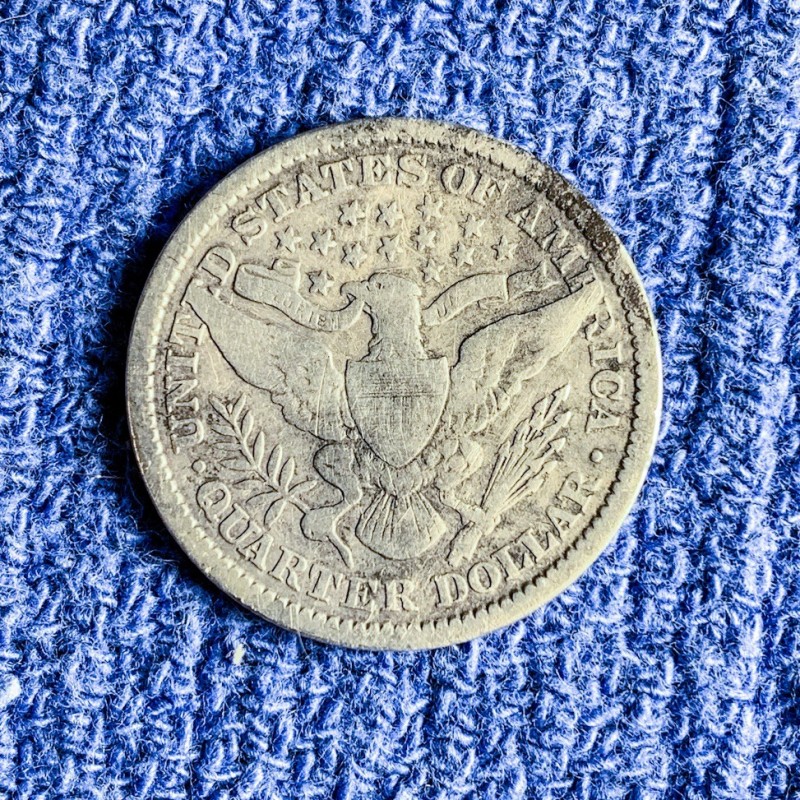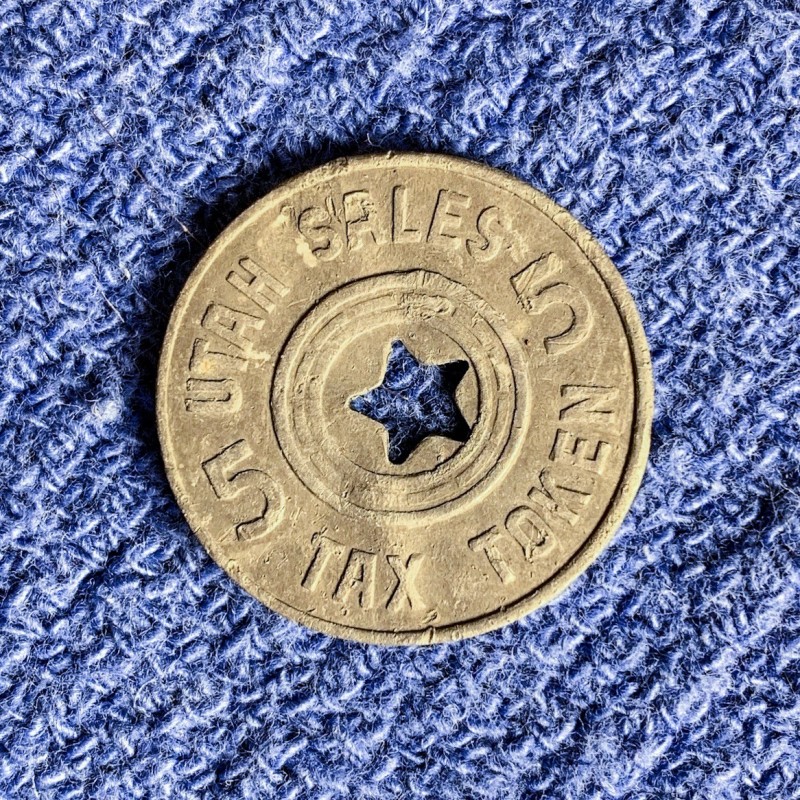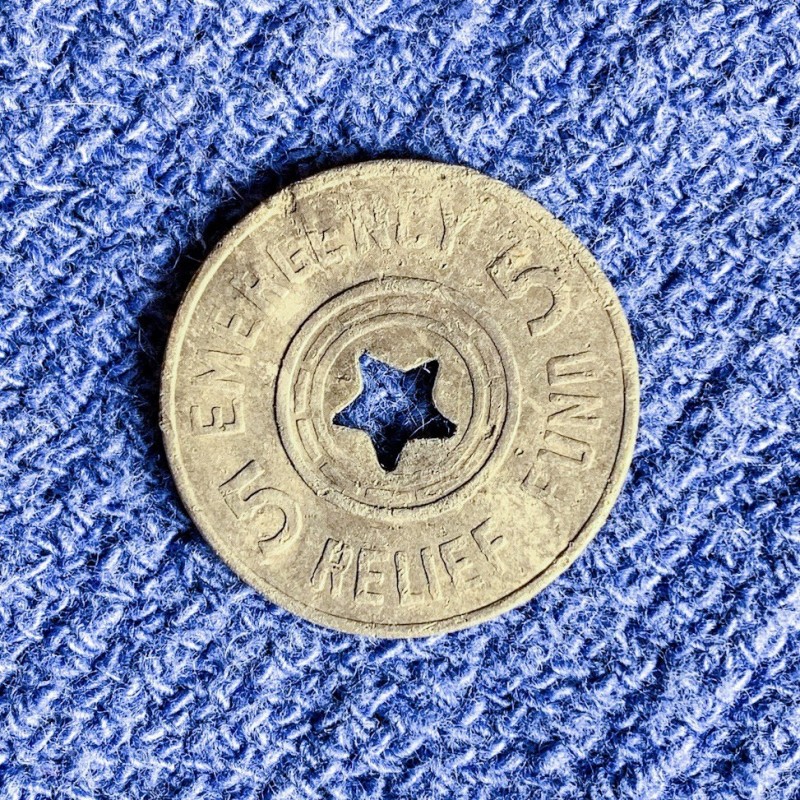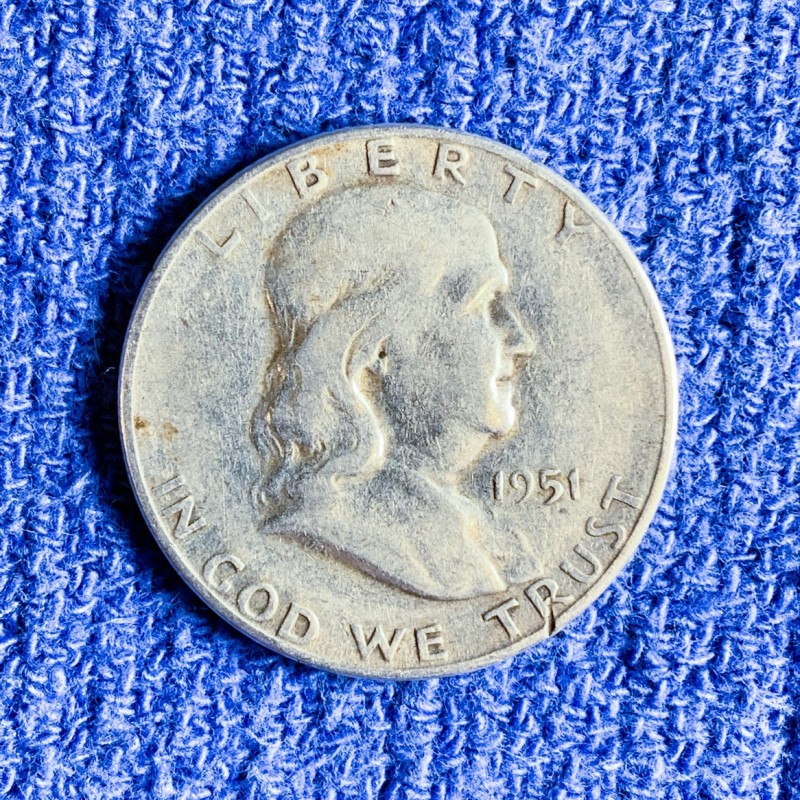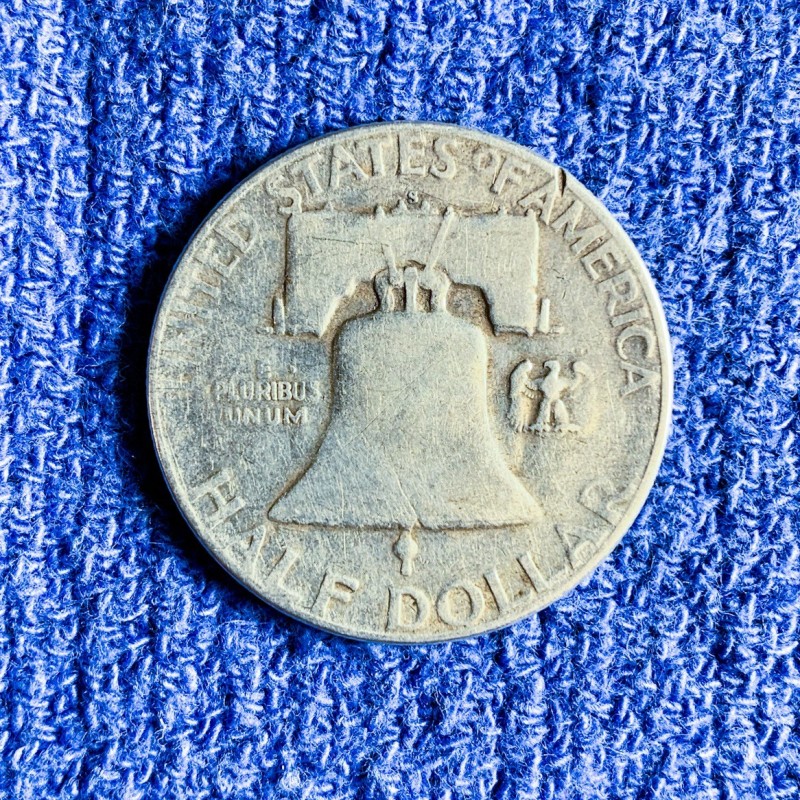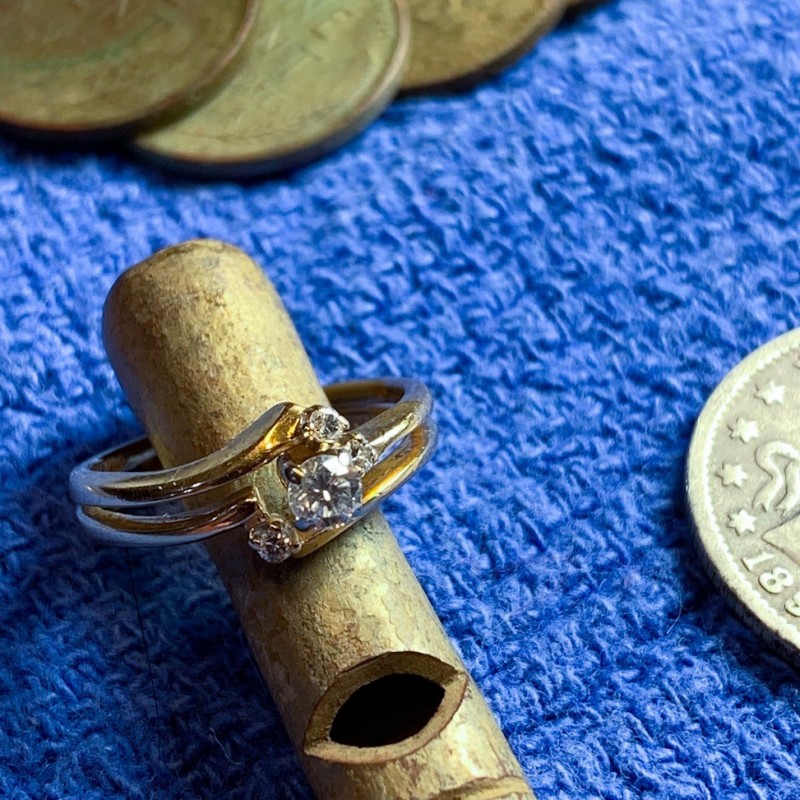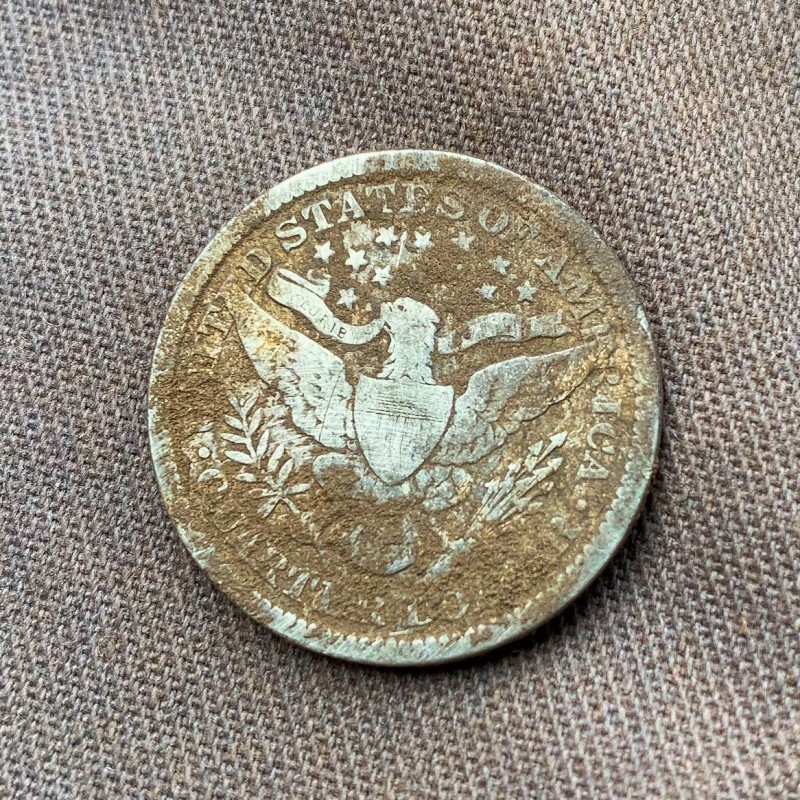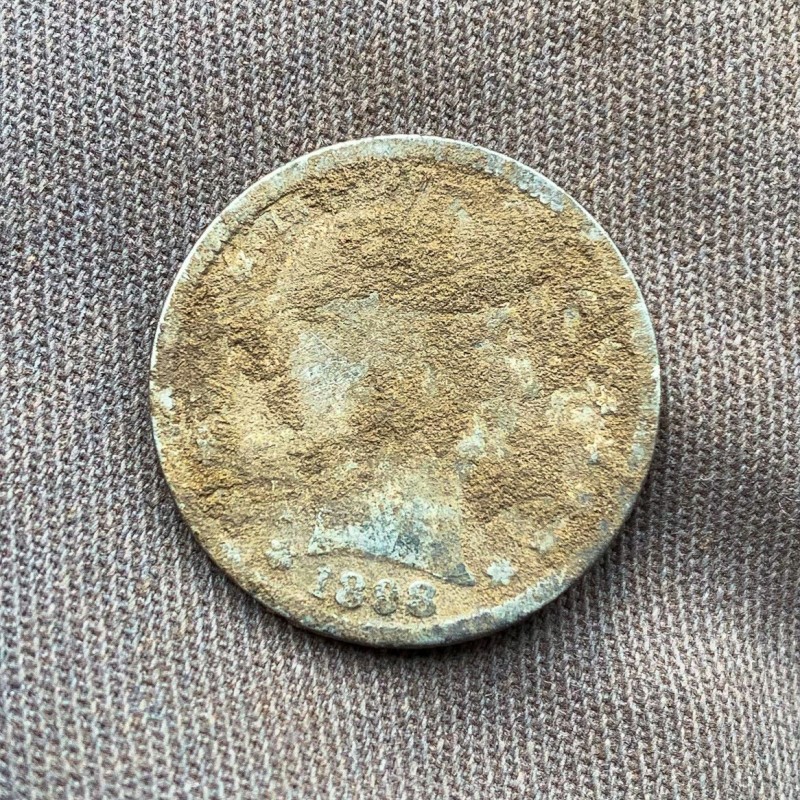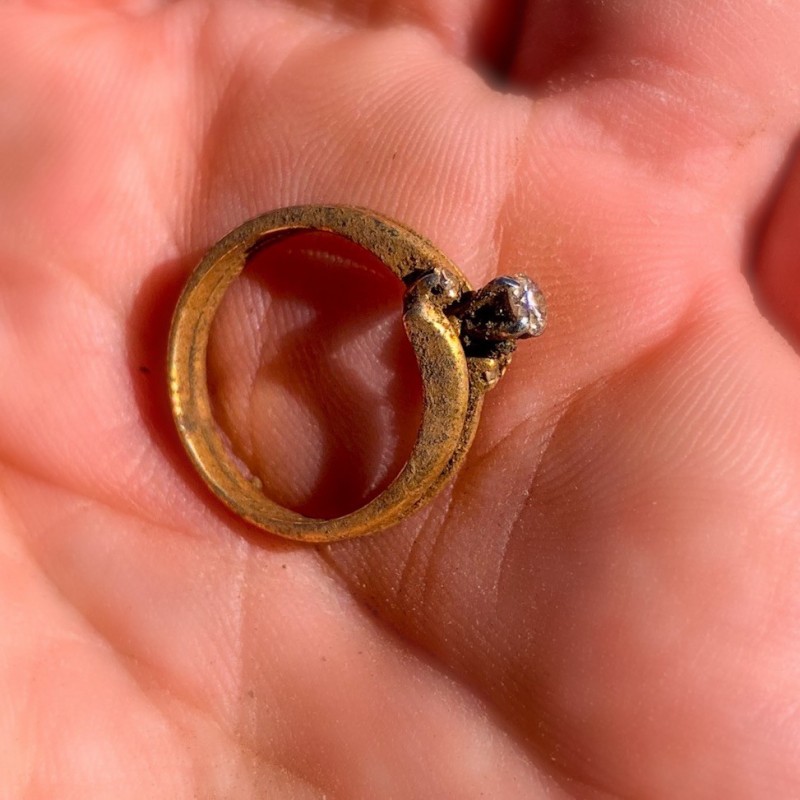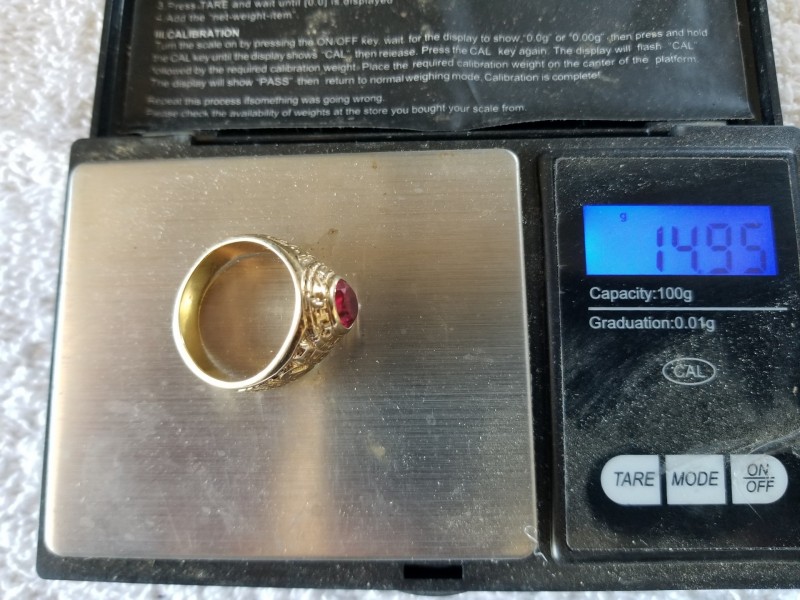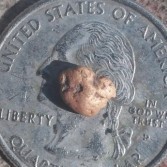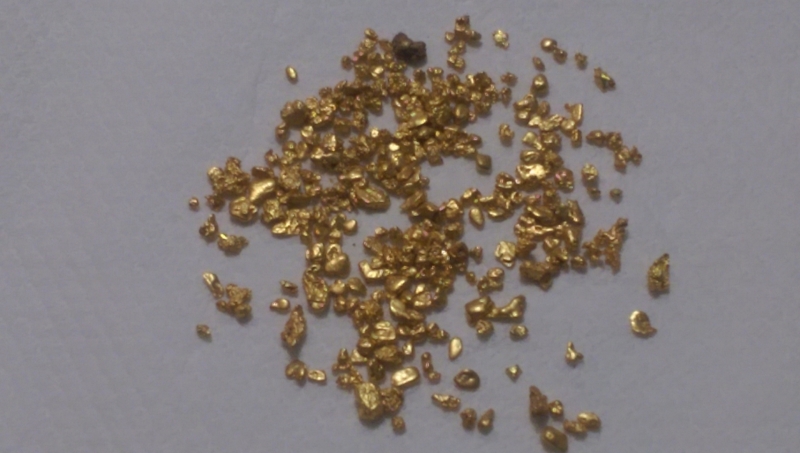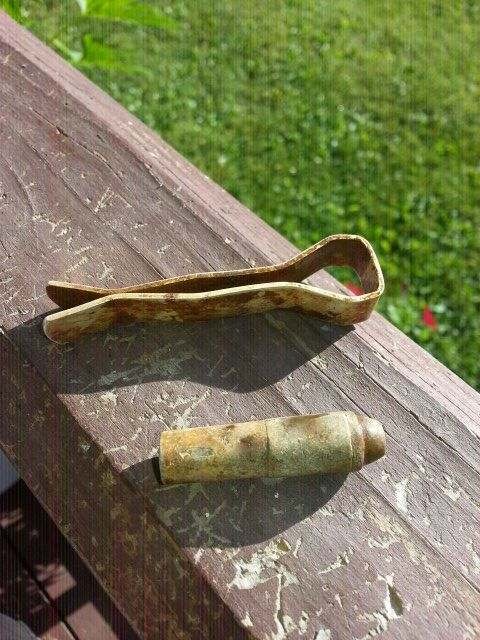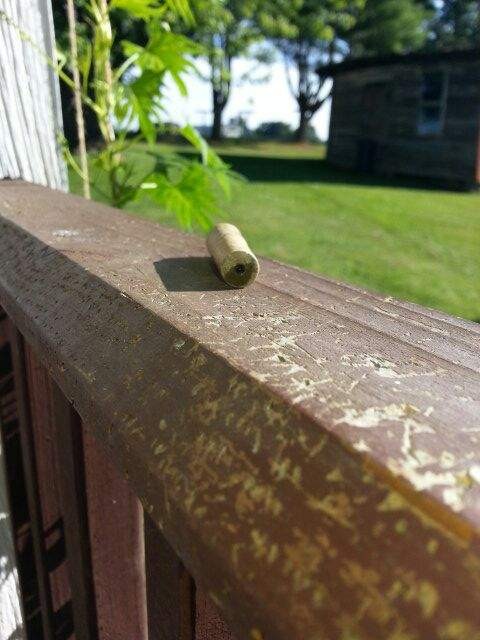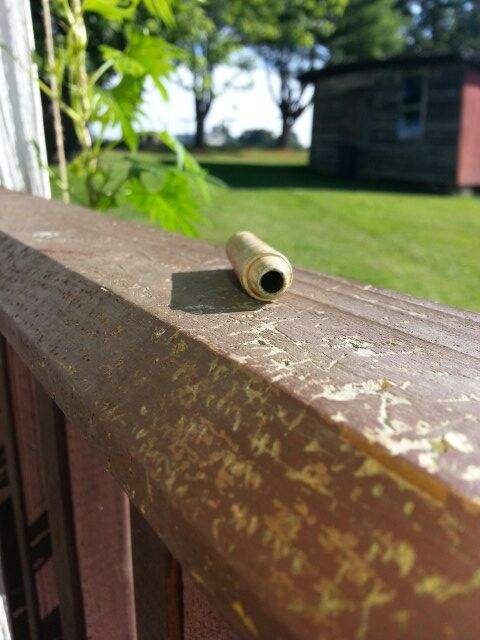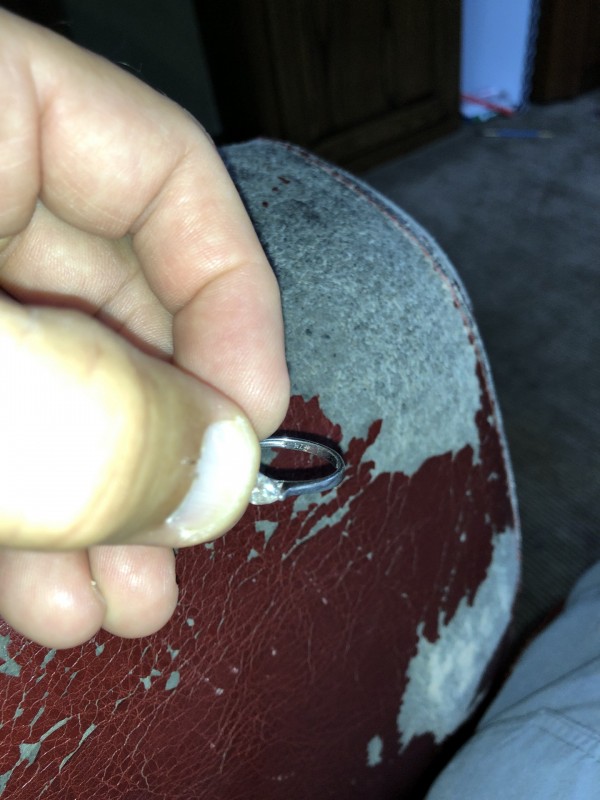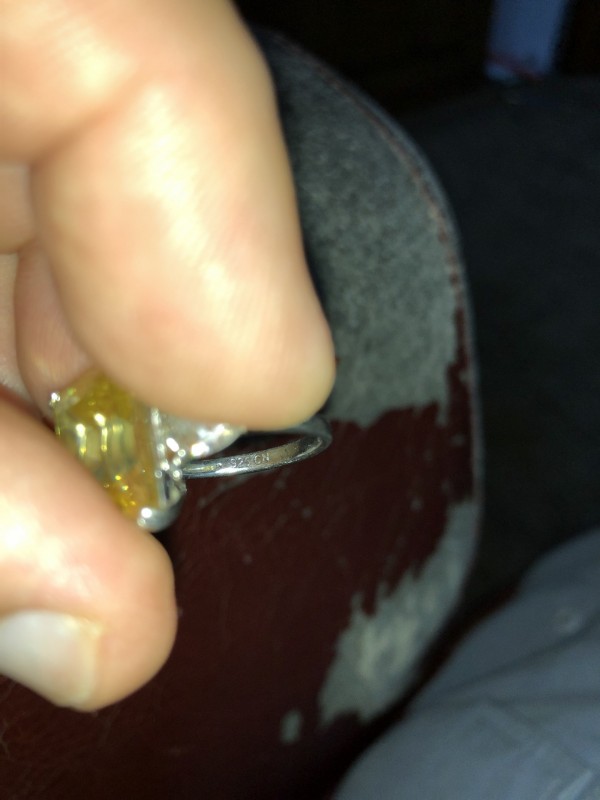Leaderboard
Popular Content
Showing content with the highest reputation on 07/10/2019 in all areas
-
10 points
-
Most of us have seen gold coins and a lucky few have even unearthed one. But have you seen a US gold coin that was found with a detector, like this one? Only 34,500 minted. Yes it is a really great condition 1856-S Indian Princess $3 US Gold Piece. Jared T. in WY can now proudly join the Gold Coin Club. And he is certainly happy with his choice of the Equinox 800 fitted with the small 6" coil for trashy sites.4 points
-
X is relative to the area you detect, this is why Minelab supply the GPZ with a Ferrite so you can calibrate the detector. If there is no X signal or minimal X signal then there will be minimal effect, however if there is a lot of X signal then an incorrect Ferrite balance will have an effect. Any noise in the audio train that does not need to be there should be removed via calibration, good detecting practices and sensible settings. The operator has a choice and can decide to not bother using the Ferrite (if they do then I highly recommend they use Auto mode), the GPZ will find good gold if the Ferrite balance is out, if X is present then there will be an extra layer of noise that is varying relative to the amount of X signal in the ground but even in high X situations having a poor X balance does not kill off huge amounts of performance. But if you combine, salt signal, saturation signal, poor X balance and EMI, they can remove a lot of target signal compared to another unit that is being used more efficiently. (EDIT: added more clarity) I like Semi-Auto mode because it saves the need to continually place the Ferrite on the ground, compared to using Quick-Trak to get the G balance correct when using Manual mode. I NEVER use QT without the Ferrite present. Ferrite balances prefer a sweep method not a pump method, only use the pump method for G balance in Semi Auto mode. If you are not noticing any real difference between using Auto and no Ferrite and Semi-Auto using the Ferrite then it suggests your ground has minimal X signal. However because X signal is subtle and mixes in with general ground noise feedback my position is to always X balance with the Ferrite and use Semi-Auto mode just to be sure. It take seconds to do and removes any doubt. The percentages of advantage is in the peice of mind in knowing my detector is always optimal no matter what the ground I am working in. JP4 points
-
3 points
-
I'm sure someone with V3 experience will chime in, but the simple answer is aluminium and lead and lots of other targets respond in the same range as gold so you end up digging those. If you have a million pull tabs that all read the same you could skip those signals knowing you are skipping the 15% or whatever of rings that ring up at the same signal range. You can play percentage games like that, but there is no way to tell if the signal is gold or aluminum or etc without digging it up. I wish there was, and I was the only one that had it. That would be fun! Btw, this will probably get moved to the detecting jewelry forum. This one is for nugget hunting. Welcome to the forum!3 points
-
2 points
-
Not too shabby for an Arizona weekend. (We don’t have the old stuff you others have got in the ground.) Three straight days of detecting yields an 1898 Barber Quarter, 1945 Mercury dime, 1951 Franklin 50 cent piece, Utah state tax token, 13 Wheat pennies, some other trinkets, and a 14k gold/platinum setting diamond ring. Not shown here was also a serial number stamped on a plaque from an 1880s sewing machine and a whole pile of other junk. I’m most excited about the Barber and the 50 cent silver. The quarter was about 6-7 inches down and on edge. It sounded good both ways, but swinging inconsistent numbers on the Equinox 800 in Field 1 with the 15 inch coil. I surmise the yard had been cleaned out before even though the owner thought it had not. That was one of it’s only few coins in 8 hours of detecting it—and the yard was massive. Conversely, the Merc., Franklin, and most of the Wheats came from the another small 8’ by 16 ‘ front yard that took only a couple of hours to detect. The diamond ring came from the old school house. Left by someone else unwilling to dig a repeatable number 12 target. Can’t wait to do it again, but going to need some muscle recovery time from all those lunges and precision digging.2 points
-
2 points
-
Yeah, I don't know how you guys endure the whole dig every metal target thing. I have a hard enough time with lead shot using discrimination. Any gold I'm missing is ok, because I'm confident I would just give up and have zero chance if I had to dig every piece of iron too. My ADD pretty much requires I always play to maximize my % of good targets over bad targets, rather than getting every good target out of the ground. It would be nice to have better patience, but I don't, and at my age it isn't going to change.2 points
-
Nice score...hard to come by solitaires with stones of any size that are real...that one no doubt is real judging by the amount of prongs. Thanks for posting. strick2 points
-
Very nice ring. Silver rings typically have semi-precious stones in them. Here is a good resource for identifying ring stones..... https://www.gemsociety.org/gemstone-encyclopedia/ Mike2 points
-
Sweet white gold. White gold stones are normally real. Size the stone...... Mike Diamond Carat Weight per size table.pdf2 points
-
Was researching the coin and came across a YouTube video about a similar coin style. In the description was an email address which I wrote to in hopes of finding out more. The response is below: Both coins have the same inscription.Obverse: Chien Lung Tung Bao (Qing Dynasty Emperor Chien Lung 1736-1795AD)Reverse: Boo Yuwan (Peking, Board of Public Works Mint).The smaller one cash coin which is usually the size of a US quarter coin is typical. The larger one is a modern charm based on that coin. Any coin larger than the one cash coin would have a different inscription or state a denomination on the reverse such as 10, 50, 100, 500, 1000. However, this emperor’s reign was not know for large or multiple cash denominations over 10 cash (Sinkiang Province issue) which wasn’t much larger than the 1 cash regular issues.2 points
-
General advice is dig all pull tab signals! You don't want to risk leaving a gold ring in the ground. With the V3i you can use the polar plot feature to help a little bit. In 3 frequency mode the pull tabs will be all over the place whereas the rings more often show a nice tight pattern. This is assuming the ring is flat, it's big enough, and good quality. You still risk leaving a ring behind, but it may help you out some.2 points
-
2 points
-
Thanks for the reply. I'm at work on my phone so I will have to take this all in later when I can think a bit longer. But that all makes sense. I will definitely try out semi auto and the ferrite again when I get back into the field and see how it affects both the z14 and x coil balancing. The semi auto update did not yet exist when I had to stop detecting to go back to work so it's kinda new to me. I detect all over the country in different ground types Arizona to Colorado, good to know how to adjust for each. But that leads me to a last question: is there a circumstance you can conceive were Auto would be used instead of semi auto now? Also, would manual still be preferable in cases where the soil is very consistent, or is there no advantage to using manual on the GPZ now?2 points
-
That is a find! Thanks for sharing as it helps keep us going when it's hot, dusty and the digging is hard.2 points
-
You can also download a free pdf version here https://archive.org/details/cihm_027532 points
-
I am in full agreement that the GPZ is a great machine to use and fairly easy to learn. The questions we ask are not intended to make the machine seem more difficult to operate or to make us look or feel smarter for asking the direct pointed questions, or to frustrate JP :) The truth is, that the more information we have on how something works, also helps us solve current or future problems that might come up, whether it is some strange coil, setting experimentation, or who knows what. Many terms are used and assumed (sometimes incorrectly) leading to misunderstanding information. I prefer not to assume. And the fact that we have someone like JP on here to explain this stuff, is much appreciated. For example, if the questions were not asked, I would still be using the octopus style ground balancing, which can still end up leaving the machine not ground balance to its full capability. Anyways, I have found this to be a very healthy discussion.2 points
-
Howdy Rob. A message for your 'on the fence' customers from a previous 7000 owner, only semi-experienced detectorist, very minimally experienced prospector and a person with zero affiliation with anyone person or company. 1) the GPZ 7000 is a very easy detector to set-up and use and is also a very powerful detector. I was a complete novice when I bought mine and found gold with it quickly. If you allow it to be, it is very straight forward. 2) all of this can be as simple or as complex as the end user wishes to make it. Some people want to know the how, why, when and where of how something works - that's the complex bit . If you just want to know how to work the 7000 then that's easy. 3) Turn it on. - noise cancel. - balance with ferrite and Quick Trak in semi auto. - release Quick Track and pump ground balance just off to the side. - check ferrite again. If still making noise over ferrite, balance with ferrite and Quick Trak in semi auto again. Repeat the above steps until quiete over ferrite and ground. - start detecting. - check over the ferrite sporadically through the day or if the detector seems 'out of tune'. 4) With minimal practice this sequence will flow easy. 5) The Ground Mode to choose and the Gold Mode to choose are explained very well in the manual. 6) The default settings are a great place to start and when you get some hours on the machine start to test and play - especially with un-dug targets. 7) The GPZ 7000 is heavy and expensive but also awesome. Comes down to an individual's needs and abilities. 8) The GPZ 7000 won't find gold that isn't there. The best detector in the world doesn't replace research and time on the ground. 9) JP - I've tried to summarise your balancing process in point 3. If it is out of kilter please copy and paste it and fix it up ? 10) If I had the money to buy one and the time to use it I would have a 7000 again in a heart beat. So if you have the time, the money, the location and the physical ability - get off the fence ?2 points
-
1 point
-
I go about Ferrite balancing a bit differently to what is shown or advised, this is my own preference and is to do with Saturation noise and Salt signals, especially with the X coils because they can Saturate quite badly. Instead of the Octopus wobble I briskly (not too brisk) wave the coil over the ferrite from left to right under the blue sticker at the front of the GPZ 14 coil, this is with the Quick Trak button depressed of course. DO NOT scrub the coil on the Ferrite this is because there is always a bit of residual signal especially in Saturable ground, once the ferrite noise dissipates I release QT and pump the coil to one side (make sure you are in Semi-Auto GB mode), this then gives the GB accuracy as a DOD coil will always sound quiet from side to side even if the GB is out, once there is no noise up and down then come over the Ferrite again to check if there is signal and repeate the process using QT if there is. Pump the coil to one side again and check the Ferrite again. This whole process should take 20 seconds, eventually you will get no ground signal up and down (Ground Noise) and minimal signal over the Ferrite. If the ground has BAD Saturation signal the Saturation signal will be magnified up through the centre of the Ferrite thereby preventing you from getting the coil close enough to actually balance the Ferrite out fully, in other words the detector will be trying to balance out the Saturation signal and not the X signal off the Ferrite. I also recommend users adopt the GB configured to their USER button approach and to go into Manual mode when checking deep targets or committing to dig, leaving the GPZ in Semi-Auto will allow the GB to drift either through exposure to the pick whilst digging or just general drift through the coil not moving, either way the GB will be out which is not obvious unless you pump the coil. JP1 point
-
In my opinion Auto is only there now in case I break or misplace my Ferrite. If people do not see the point of the Ferrite then I HIGHLY recommend they use the Auto mode to at least give the detector the chance to calibrate the X signal naturally. Auto might be the only way people can use the X coils in areas with a lot of X signal. Absolutely you can detect in MANUAL, I often do and it does provide the maximum depth achievable assuming both X and G are calibrated properly to the former and localised ground balance conditions for the latter. If ambient temperatures are north of 15 Deg C in the morning then usually the X balance does not move very much, I allow an hour for things to settle down electronically, but seriously 30 minutes should be plenty if the ambient is getting above 20 DegC. It only takes seconds to check the Ferrite balance, so long as the residual signal is small then there’s no need to fret. JP1 point
-
I wish it were even that simple. In the US, the two most common pulltab types are the ring & beavertail and the so-called 'square' tab. One problem is that even when narrowed down to these two most common types the TID's vary quite a bit. To give an idea, on the Minelab Equinox the beavertail alone (broken off from the ring) can fall in the 11-13 region, right on top of nickel zone. Most common TID for the square tabs is 14, but broken in half they read 12-13 and 16 is fairly common. The full r&b when completely flat (not folded over) can go as high as 18 (bottom end of corroded zinc penny range). There is a small version of the r&b which reads 13 when not folded over. And you can find every orientation of r&b -- people back then (1965-75 was the time of the r&b) just loved to fiddle around with them, sometimes breaking them, folding them, chaining them together.... The bottom line is that it takes humans to lose rings, and those same humans like to drink their beer and soft drinks (and tossing pulltabs on the ground ?) in the same locations where they're losing their valuables. Gotta take the bad with the good.1 point
-
Nope, pretty strong current now, will be less in the fall/winter. But that means I'm only knee deep or less by necessity. The floating sifter might be unworkable, but I'm going to try, because I already know the sand scoop is. I assume if I just turn with my back to the current the sifter should float in the perfect position to dump into. That's the sifter I'm planning on making. I'm having a hard time finding the netting and might have to order off amazon https://www.amazon.com/YARDGARD-889230A-Black-Plastic-Hardware/dp/B000W6408U So might not happen till next weekend (my "weekend" is Thursday to Saturday)1 point
-
Hello everyone, i just bought a F-Pulse and want to share some important findings. Alkaline AA (Panasonic Platinum Power) = Sens-3, works perfect. Lithium AA (Energizer Lithium Ultimate) = Sens-3, noisy on everything even holding in mid air. Hope this helps someone because i've been reading about people thinking there pointer is broken.1 point
-
1 point
-
1 point
-
I wasn't sure how long it took to get to operating temperature so did my ferrite balance on start up and then again after half an hour of detecting. Through out this detecting session I would check the ferrite on the ground to see if any response was coming from it.1 point
-
Thanks Randy. I was follow Tony's progress on these on Facebook. I know he did a lot of testing prior to releasing these.1 point
-
1 point
-
What a find......Gold coin is on everyones bucket list...... but that ones in crazy nice condition as well. That thing would be my crown jewel. Congrats to him.1 point
-
1 point
-
Thankyou Northeast, what Ive been saying can seem confusing because I am being asked VERY detailed questions and then trying to give VERY detailed replies. Like I said previously it should take 20 seconds from the machine switching on till your moving off to find your fortune. In our shop we call it the E F G approach, alphabetical so it is easy to remember the order. E for EMI F for Ferrite Balance G for Ground Balance Hope this helps JP1 point
-
I'm in Northern California and yes, that is my experience up here. Our soil is all over the place, to the point that VLF's can be pretty much useless in certain areas due to mineralization. I ended up getting a PI and the difference was unbelievable. The PI won't see small gold nearly as good as the VLF but at least you're looking for gold and not digging up hot rocks and ghost signals!1 point
-
I can't pretend to understand x-ground signals and temperature changes and such, but I can conclusively say from direct experience that Semi-Auto is the way to go in the places where I detect. The change after the update was subtly profound. Recently I have changed the User button to be able to switch to Manual when messing with a target signal. Sometimes I use it and sometimes, when the signal is apparent, I don't. But... I love this discussion.1 point
-
Hey Jasong, I have been using Auto since the unit has been released and found plenty of gold. I guess I could have missed stuff, but I would never know. In Minelab's instructional manual, I'm sure they recommend running in manual. I found in the manual where Minelab states this - That being said, I tried Semi-Auto a few times in the past and didn't notice much change. I tried it again today, but believe it or not, it seems to really work well (go figure). I ran Semi-Auto all day, used the Ferrite ring twice. I pumped the coil up and down throughout the day, no real change in threshold. Going back to what JP said originally - why can't you just run in manual ground balance all the time, like many would do with fixed ground balance on the GP or GPX units? I have never went into Manual balance on the GPZ 7000, so I'm clueless on how it performs. Would you use the Ferrite Ring also in Manual?1 point
-
1 point
-
5 ounces in 2 months ain’t really that bad tho..... Maybe you can get more next trip?1 point
-
Hey Flak, Ya, I never noticed much difference in Semi-Auto to be honest. I might have to play around with it again to see. I love the GPZ 7000 beyond the weight. I toggled the idea of going back to a GPX with a EVO coil, but it's hard to put down the GPZ 7000 when you know how powerful it really is. Also, maybe different type of gold I wasn't able to find as well with a GPX, especially the very porous type gold.1 point
-
I don’t normally revive old threads but I thought I’d chime in with my recently purchased MX7. Pros: Consistent Target ID, especially with the 6” concentric coil. Lovely crisp audio that White’s does so well. For me, really well balanced. Great menu layout and sharp display. Solid build with no creaks or wobbles. Strong performance in different ground types. Cons: Nothing so far. The MX7 is a killer unit on our Australian $1 and $2 coins with a TID of 69 and 65 respectively. Most screw caps were 70/71 (which are our nemesis down here). Yes I could have purchased the Equinox (which I have tried) but the MX7 just felt like it suited me better. I will report back if I discover anything I don’t like. How does White’s make detectors sound so good! For me, this is one of the most important aspects to any detector purchase. Tony1 point
-
In Auto mode the detector is VERY slowly tracking the X signal and also tracking the G signal as per normal, the problem is Salt signals and Saturation signals drag the X signal away from accuracy so Semi-Auto mode is better. In Semi-Auto mode the X balance is fixed unless the Quick-Trak button is triggered. In warmer weather the calibration of X does not shift much but in colder weather it can shift as lot from first startup to when the electronics warm up, so its a good idea to check periodically. So long as no signal is present or minimal signal is present on the ferrite your all good. FIXED was only ever recommend on the GPX series when using Fine Gold, Enhance or Sens Smooth. Fixed is not preferred on the GPZ because it tends to react to ground changes more aggressively especially when one winding is on different ground to the other. On an interchange the operator is effectively blind during the signal phase response of the interchange which is where a lot of nuggets reside so it is better to let the Semi-Auto GB iron out those interchanges. Detecting fast is always going to aggravate salt signals, you need to slow down and control the coil sweep speed. This is very important for GPZ because DoD coils and the pre-set Motion filters are slow in response to get maximum depth signal noise off deep targets. Deep targets are slow response signals. Hope this helps JP1 point
-
Found these two targets while relic hunting yesterday. The first item looks to be an aluminum cloths pin. This is the second one I've found at this site. The second item has be buffaloed. At first I thought it was a 357 magnum cartridge but its not. It tapers from right to left. There is a hole that goes all the way through. The hole also tapers from the larger to a small hole. Appears to be non-ferrous in nature. Very strange.1 point
-
1 point
-
I have detecting a local river crossing/ford near me,the shallow river has 2 main attractions that it was one of the main routes into the village from one of the main Roman road going north,and often visited by romans and drover going back 2000 years. The river is shallow as rivers go about 12'' deep during the summer and maybe 18-20'' during the wet winter months,but by your average river depth its very shallow,but the length of time that humans have used this crossing items would have not only been casual drops but also votive offering by the Romans too the water gods,so the possibility of finding some roman coinage is a possibility,as the water level is reasonably low during the summer months as that is the only time i detect this river,then one does not really need any high end submersible detectors,infact when i put my chest waders on all i use is a old Compadre which has had a coil plug added so that i can use a variety of coils,but surprisingly enough i always use the small 4'' coil for possibly pickling out the coins from between the rocks and it does work rather well,2nd machine i also use but not as much is a very old Musketeer and hang the control box from my neck and just use the small 7.5'' coil or what ever size it is once again from my neck. The 2nd and most desirable type of detecting that i do from this small crossing and that is the fact that during the hot summer months the local mums take the kids down to the river for a paddle as its shallow,the kids go fishing with nets and buckets after tadpoles etc and mum shows some interest,but this is when the problems start,as mums fingers get wet and cold from playing with the kids and before long the fine gold ring that once belonged too granny and often has a high class lump of ice set into the ring has gone,panic sets in and they think they will never see the ring again,but over the years folks have approached me in helping find these lost items of jewellery and i do this as a totally free service to the local community,albeit a few times i have found a few rings and some other items of jewellery that had been lost possibly decades ago and the original owner have either died or left the area and no contact details so those i have claimed for myself,but for the most part these items are handed back to the original owner. Another interesting method that i also do is that as this mainly was a ford/river crossing for nearly 2000 years a small 'hump back' bridge was built between 250-300 years ago,dont have a exact date but thats not far out date wise,this small bridge runs right next door to the original ford crossing,so this has been a main exit route from the village after say a burglaries and late at night folks have been known to throw/dump interesting items into the river from the bridge,i wont expand on that but not only detecting is good but also 'magnet fishing' has produced some interesting finds over the years. So these have been my detecting ventures over the years mainly when the crops are in full growth so like a junky i need my detecting fix i usually venture into my local river,not as exciting a some of these top YouTube players,but it gives me some excitement and i enjoy doing it,and as long as it makes 'me' happy then that is all that counts.1 point
-
There have been reports where folks claim that the revised software is less deep than the original. Hard to say unless you have data on hand from a few of each version. It is a PI detector and sensitivity to tiny low conductor targets will likely be less than the Nox. Depth, of course is not the reason we use PP’s, it’s sensitivity to find exactly where a target is which has been previously detected - either to avoid a large hole or to find some tiny bit in a pile of excavated dirt.1 point
-
Ok, time to out myself. I am self declared promoter and cheerleader for all things metal detecting. I may appear at times to promote a certain brand, but simply Google me and study a bit and you will see I promote all reasonably good brands. It has nothing to do with brands. Ultimately, I am a consumer advocate and do what I can to foster competition and innovation in the marketplace. It is all for very selfish reasons - I want the best metal detectors possible to be put in my very own hands before I get too old to use them anymore. I have always tried to the best of my ability to treat all the manufacturers fairly and with an even hand in commentary because I very much want to influence them if possible. Being too much on any one team would hurt me by limiting my access to the other team. Bashing anyone at all in an unreasonable way is self defeating, so the trick is to try and offer critical commentary without being rude about it. You are all part of this. This forum had a specific goal by design of trying to attract the most knowledgeable detector users possible. Hand in hand with that is an insistence on polite, reasoned discourse. I can tell you for a fact most manufacturers look on the forums as a Wild West show at best, and it you are honest the behavior exhibited on many forums should embarrass us all as a community. Why should manufacturers listen to a bunch of bickering children casting insults at one another? Or those who say that they, the manufacturers, are stupid dull idiots? I am sure this forum gets watched by more manufacturers now than most, purely because there are some smart people here providing some smart commentary. That means that you, the forum member, have a certain degree of influence, but only if you present yourself well as a person who can put two sentences together to make a logical argument. Do certain things about metal detectors frustrate you? Are there things you want improved? Competition is now heating up to unheard of levels and the only manufacturers that are going to win are the ones who start listening to their customers more than they ever have before. Be part of my plan and get on my team as being a person to provide and offer commentary on what detector products do well and why. What do you like, what don't you like? Do it in a professional - that is the key - as professional a manner as possible, and I believe I can promise your desires and concerns will get seen by people who can make a difference. You do have a little power here. Please use it responsibly.1 point

